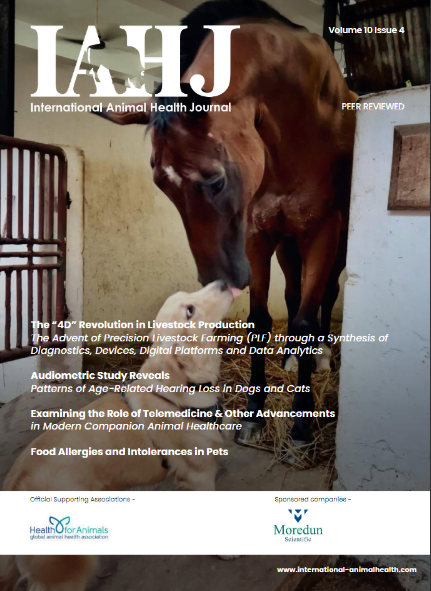Ticks are responsible for a diverse group of neglected, and rapidly expanding diseases, affecting humans, companion animals and livestock. A growing understanding of tick-host ecology, disease diversity, and their growing burden on human and animal health has demanded more integrative approaches to their diagnosis and control. Dr. Andy Lane at The Native Antigen Company explains the need for integrated approaches to human-animal diagnosis.
Extract:
‘Tick-Borne Diseases: The Need for Integrated Approaches to Human-Animal Diagnosis’
Tick Emergence and Distribution
Ticks are obligate ectoparasites of the Arachnida class, meaning they are more closely related to spiders and mites than insects. As haemoparasites, ticks feed on the blood of mammals, birds and reptiles to meet their nutritional requirements and progress through their lifecycles. After transferring to a host, a tick will locate a feeding spot, grasp the skin and lacerate the epidermis with their hypostome (harpoon-like appendage). The tick will then excrete anti[1]coagulants and anti-immune modulators to facilitate feeding and nullify the host’s immune response (Figure 1). Hard ticks of the Ixodidae family feed on their hosts for multiple days at a time before detaching, while soft ticks of the Argasidae family can complete feeding within a matter of minutes. Regardless, ticks can draw immense quantities of blood, equivalent to 200–600 times their unfed bodyweight.
In addition to satisfying their nutritional requirements, this feeding process makes ticks ideal vectors of pathogens, which readily migrate from the tick’s gut to the host feeding site. Tick-borne pathogens (TBPs) have likely existed for millennia, evidenced by the genome of a 5,000-year-old Tyrolean ‘iceman’, containing Borrelia-like DNA (Figure 2).3 In spite of their long history, our discovery and understanding of TBPs is fairly recent, with the Rickettsia genus of bacteria being the first identified in the early 1900s. Over the last century, a constellation of bacterial, viral and protozoal pathogens have since been associated with ticks, responsible for a diverse range of diseases affecting human and animal hosts.
The diseases that TBPs cause are highly diverse, manifesting in a range of acute and chronic pathologies, including fever, rash, headache, anaemia, jaundice, haemoglobinuria, and anorexia to name a few. Aside from transmitting pathogens, ticks are also responsible for severe toxic conditions, irritation, secondary infections and physical damage associated with their bites.
Click the download button below to read the complete version of ‘Tick-Borne Diseases: The Need for Integrated Approaches to Human-Animal Diagnosis’ by Dr. Andy Lane at The Native Antigen Company











